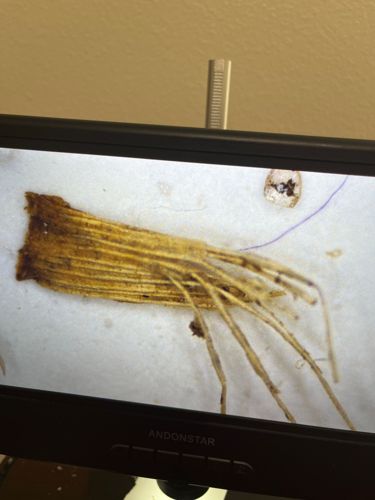Carpet Beetle Larva (likely varied, common, or black carpet beetle)
Scientific Name: Dermestes lardarius (Larder Beetle), Anthrenus verbasci (Varied Carpet Beetle), Attagenus unicolor (Black Carpet Beetle), or other Dermestidae species
Order & Family: Coleoptera, Dermestidae
Size: Typically 2-5 mm in length for larvae, depending on species and developmental stage.

Natural Habitat
Indoors, particularly in dark, undisturbed areas such as under carpets, in closets, pantries, attics, and inside wall voids. Outdoors, they can be found in insect nests, animal carcasses, or dried plant matter.
Diet & Feeding
Opportunistic scavengers; they feed on a wide variety of animal and plant products, including natural fibers (wool, silk, leather, fur), dried pet food, cereals, dead insects, animal carcasses, and dried plants. They do not feed on synthetic fibers.
Behavior Patterns
Larvae are largely cryptic and can cause considerable damage before detection. They undergo several molts. Adults are winged and often attracted to light, sometimes found on windowsills. Their lifecycle typically takes several months to a year, depending on environmental conditions and food availability. Larvae are known for their bristly, often segmented bodies and sometimes possess tail bristles.
Risks & Benefits
Risks: Considered a household pest due to their destructive feeding on natural fibers, stored food products, and museum collections. They can cause skin irritation or allergic reactions in sensitive individuals due to their larval hairs. Benefits: In natural ecosystems, they play a role in decomposition by feeding on dead organic matter. Forensic entomologists use some species (like Larder Beetles) in crime investigations due to their presence on decaying remains.
Identified on: 9/5/2025